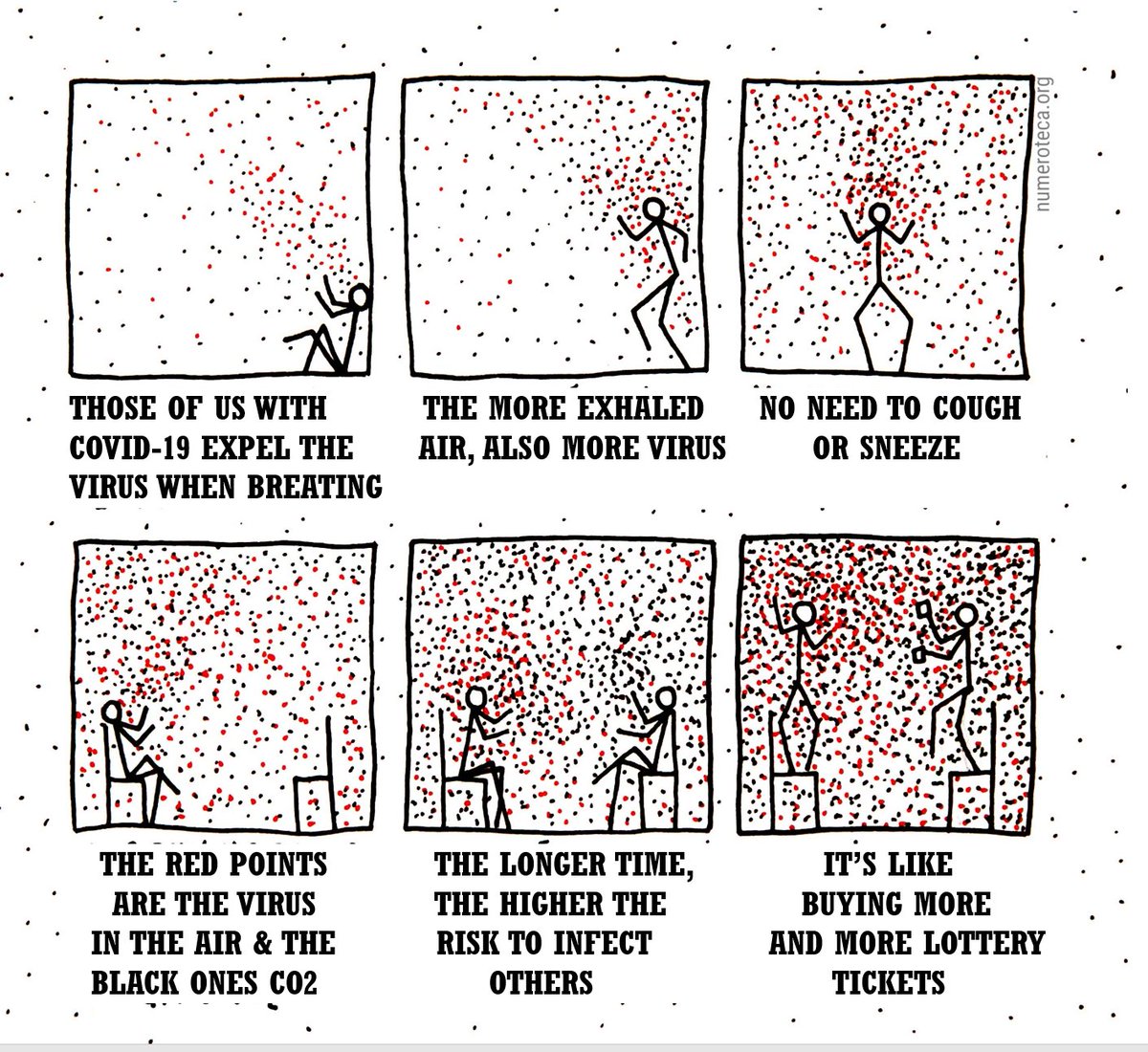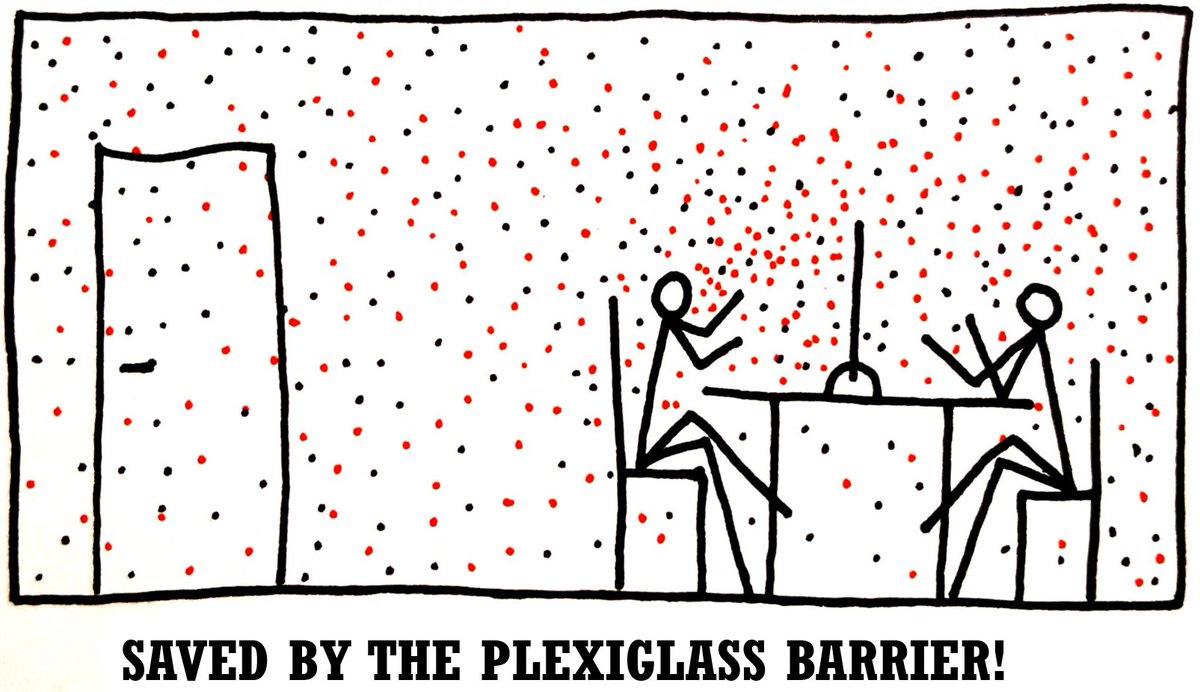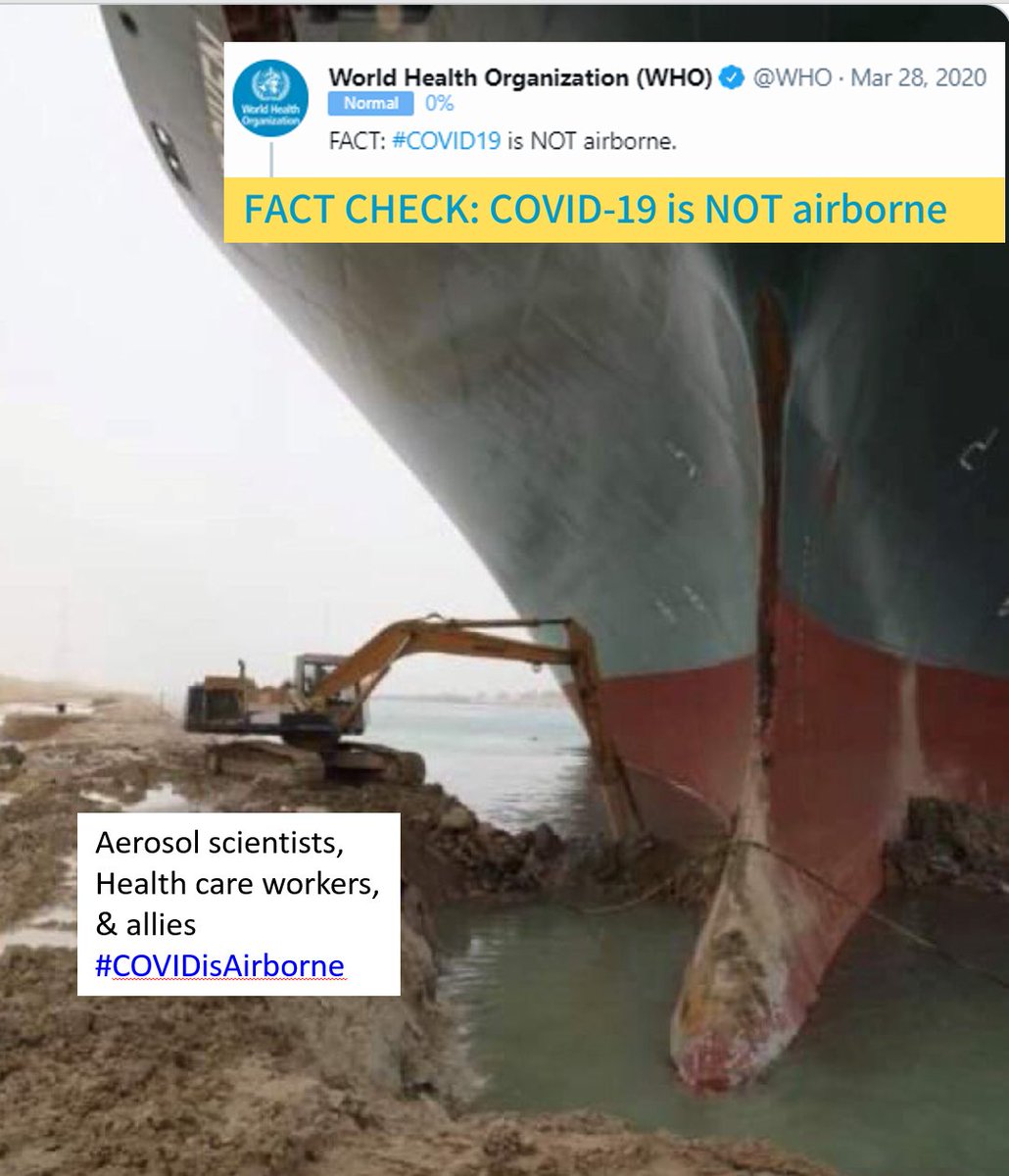
1/ A sad anniversary: 1 year since one of the worst errors in the history of Public Health
SARS-CoV-2 is mostly transmitted through the air
But @WHO said, just a year ago, "FACT: IT IS NOT AIRBORNE"
And that saying it was airborne was "misinformation"
SARS-CoV-2 is mostly transmitted through the air
But @WHO said, just a year ago, "FACT: IT IS NOT AIRBORNE"
And that saying it was airborne was "misinformation"
https://twitter.com/WHO/status/1243972193169616898
2/ We all make mistakes. But very important to correct them clearly
After saying loudly that virus only went through surfaces & large spray droplets, @WHO refuses to explain clearly that SARS-CoV-2 is airborne
Have NOT explained that their "FACT" of a year ago was a huge error
After saying loudly that virus only went through surfaces & large spray droplets, @WHO refuses to explain clearly that SARS-CoV-2 is airborne
Have NOT explained that their "FACT" of a year ago was a huge error
3/ It means that people don't know how to protect themselves, because they haven't explained clearly how virus is transmitted:
Like invisible smoke exhaled by the infected. We get infected by inhaling it
So ppl don't understand that indoors is dangerous despite distance
Like invisible smoke exhaled by the infected. We get infected by inhaling it
So ppl don't understand that indoors is dangerous despite distance

4/ And people don't understand that the more time indoors, the higher the risk of transmission.
Drawings by @numeroteca, translated by me
Drawings by @numeroteca, translated by me

5/ And although @WHO know does say clearly that ventilation is very important, they don't say why.
(Hint: ventilation does NOTHING for surfaces or large droplets, but helps a TON for airborne)
So many ventilate when no one is there. Or a few minutes every hour, not enough.
(Hint: ventilation does NOTHING for surfaces or large droplets, but helps a TON for airborne)
So many ventilate when no one is there. Or a few minutes every hour, not enough.

6/ And people don't understand that plexiglass barriers don't serve any purpose (except in a cashier / teller situation, then they do help). 

7/ And people don't understand that the virus accumulates in indoor spaces.
And that one has to wear a mask at all times, if other people are going to come in. And that just putting the mask on when the other people arrive is not enough.
And that one has to wear a mask at all times, if other people are going to come in. And that just putting the mask on when the other people arrive is not enough.

8/ And people don't understand that measuring CO2 is extremely useful to detect places and situations with high risk of transmission. 

9/ As you just saw, it is not that hard to explain.
Why doesn't @WHO have drawings like these by @numeroteca in their webpage, tweets, Facebook etc.?
They don't explain it --> Ppl don't get it --> Ppl don't protect themselves well & get infected --> pandemic is not stopped
Why doesn't @WHO have drawings like these by @numeroteca in their webpage, tweets, Facebook etc.?
They don't explain it --> Ppl don't get it --> Ppl don't protect themselves well & get infected --> pandemic is not stopped
10/ Lots more details about the science and the history of the denial of and resistance to airborne transmission in the next thread.
#COVIDisAirborne, that (and transmission w/o symptoms) is why this pandemic is hard to control!
No acknowledgement ==> ineffective protection.
#COVIDisAirborne, that (and transmission w/o symptoms) is why this pandemic is hard to control!
No acknowledgement ==> ineffective protection.
• • •
Missing some Tweet in this thread? You can try to
force a refresh







